How do you identify herbs, shrubs and trees with examples?
Plants are everywhere around us and play vital roles in our daily lives. To better understand their diversity, scientists group plants into categories based on their size and structure. The classification of herbs, shrubs and trees helps us recognize their unique features, uses, and importance in nature and in human society.
Herbs, Shrubs and Trees: Definition, Differences & Examples
What Are Herbs, Shrubs and Trees?
Herbs, shrubs and trees are three main types of plants found in every ecosystem. They are classified by their stem characteristics, life span, and height. Each type provides different ecological services, supports biodiversity, and is crucial for agriculture, medicine, and daily needs.
Characteristics of Herbs
Herbs are small plants with soft, green, and non-woody stems. They generally do not grow taller than 1 to 1.5 meters. Their stems are delicate, making them easy to bend or break. Herbs usually complete their life cycle within one growing season and are widely used in medicine and cooking.
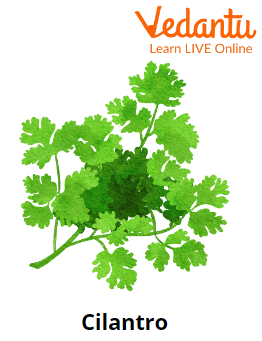
- Soft, tender stems
- Small size (rarely above 1.5 meters)
- Mostly annuals
- Used in food, medicine, and perfumes
Examples of Herbs
- Mint
- Coriander
- Wheat
- Tulsi
- Grass
- Rice
Characteristics of Shrubs
Shrubs are medium-sized plants, usually growing up to 3–4 meters. Their stems are woody and hard but not as thick as trees. Shrubs often have several main stems branching from the base, giving them a bushy appearance. They can live for several years and are important for gardens, boundaries, and landscaping.
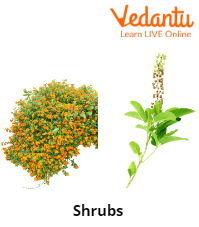
- Woody, hard stems
- Multiple stems emerging near soil level
- Bushy shape
- Longer-lived than herbs
Examples of Shrubs
- Rose
- Hibiscus
- Jasmine
- Tea
- Lemon
Characteristics of Trees
Trees are the largest plants, often living for many decades or centuries. They have a single thick, woody main stem called a trunk, from which branches grow higher up. Trees play a key role in producing oxygen, storing carbon, and providing fruits, wood, and habitat for animals.
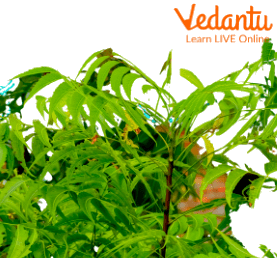
- Thick, woody trunk
- Branches high above ground
- Tallest among plant types
- Long lifespan
- Deep taproot system
Examples of Trees
- Mango
- Neem
- Banyan
- Coconut
- Pine
Difference Between Herbs, Shrubs and Trees
| Feature | Herbs | Shrubs | Trees |
|---|---|---|---|
| Stem Type | Soft, green, non-woody | Woody, thin, several stems | Woody, thick trunk |
| Height | Short (≤1.5 m) | Medium (1.5–3 m) | Tall (Above 3 m) |
| Lifespan | Short (annual or biennial) | Several years | Many decades/centuries |
| Branching | Base or above ground | Near base | High above ground |
| Examples | Mint, wheat | Rose, lemon | Mango, neem |
This table clearly outlines the structure, growth pattern, and uses of each plant type, making it simple to identify them in nature or daily life.
Other Plant Types: Climbers and Creepers
Besides herbs, shrubs and trees, two other important plant groups are climbers and creepers, which have unique adaptations to their environment.
Climbers
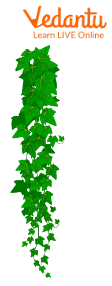
- Weak stem unable to stand upright
- Use tendrils or hooks to climb supports
- Examples: Money plant, grapevine, pea plant
Creepers
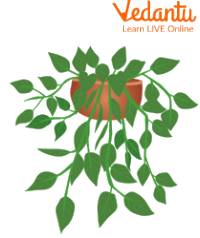
- Very soft and thin stems
- Grow horizontally along the ground
- Examples: Pumpkin, watermelon, strawberry
Key Features of Green Plants
All green plants, including herbs, shrubs and trees, share basic characteristics that support life on Earth. These features make them essential to the environment and to our survival.
- Multicellular and eukaryotic
- Possess roots, stems, leaves, flowers, fruits, and seeds
- Reproduce sexually or asexually
- Carry out photosynthesis to make food
- Maintain ecological balance by producing oxygen
Applications and Importance in Daily Life
Herbs, shrubs and trees are central to agriculture, food science, medicine, and environmental sustainability. For example, herbs like coriander and ginger are essential kitchen staples, while trees such as neem and mango provide timber, fruits, and traditional medicines. Shrubs often serve as hedges or ornamental plants in landscaping, contributing to biodiversity. Understanding plant diversity is important for biology, sustainable agriculture, and ecological health.
Life Science Connection and Further Learning
The study of herbs, shrubs and trees forms a key part of life science and environmental education. It helps in identifying plant adaptations, understanding their role in ecosystems, and making informed choices about conservation and resource management. Exploring reproduction in plants, effects of climate changes, and the nutritional value of plant foods are all linked aspects that enrich our understanding of plant life.
How to Identify Herbs, Shrubs and Trees in Nature
To distinguish herbs, shrubs and trees outdoors, observe the stem’s hardness, plant height, and branching pattern. Herbs have the softest stems; shrubs grow bushy, often branching near the ground; trees stand tall with trunks and branching high above. This simple field observation helps anyone identify plant types at home, on farms, or during nature walks.
In summary, recognizing the differences between herbs, shrubs and trees is fundamental to biology and environmental science. These plant types support life, improve health, and maintain the balance of nature. Understanding their differences and uses aids in conservation, agriculture and the wise use of natural resources for a sustainable future.


FAQs on What Are Herbs, Shrubs And Trees?
1. What are the main differences between herbs, shrubs, and trees?
Herbs, shrubs, and trees differ in size, structure, and lifespan.
Key differences:
- Herbs: Small, soft, green stems; short lifespan (examples: mint, spinach).
- Shrubs: Medium-sized, woody plants with multiple stems (examples: rose, hibiscus).
- Trees: Tall, large plants with a single, sturdy woody stem called a trunk (examples: mango, neem).
2. Define herbs with examples.
Herbs are small, non-woody plants with soft and green stems.
Examples of herbs:
- Basil (Tulsi)
- Coriander
- Spinach
- Mint
3. What are the characteristics of shrubs?
Shrubs are medium-sized plants with certain specific features.
Main characteristics:
- Have woody stems and branches close to the ground
- Usually shorter than trees, but taller than herbs
- Multiple stems arising from the base
- Examples: Rose, jasmine, hibiscus
4. What is a tree? Give two examples.
Trees are large, perennial plants with a single main woody stem called a trunk.
Examples of trees:
- Mango
- Neem
5. How can you distinguish between a shrub and a tree?
The main difference between a shrub and a tree is their structure and height.
- Shrubs have multiple branches growing near the ground and are medium-sized.
- Trees have a single main stem (trunk) and are generally tall.
- Example: Rose (shrub) vs. Mango (tree)
6. What is the importance of trees in our environment?
Trees are vital for the health of our environment and daily life.
Importance includes:
- They provide oxygen for breathing
- Absorb carbon dioxide and reduce global warming
- Offer shade, food, medicines
- Help conserve soil and prevent erosion
- Support wildlife habitats
7. Give two examples each of herbs, shrubs, and trees.
Herbs, shrubs, and trees can be identified with common examples:
- Herbs: Mint, spinach
- Shrubs: Rose, hibiscus
- Trees: Mango, neem
8. How are plants classified based on their stem?
Plants are classified as herbs, shrubs, or trees according to their stem structure.
- Herbs: Soft, green, flexible stems
- Shrubs: Woody stems with several branches at ground level
- Trees: Thick, hard stem (trunk) with branches at a height
9. Why are herbs considered useful in our daily life?
Herbs are useful because they are rich in medicinal, nutritional, and culinary value.
Uses include:
- Used to add flavour and nutrition in food (e.g., coriander)
- Source of natural medicines (e.g., tulsi)
- Have antibacterial and antioxidant properties
10. What are perennial, biennial, and annual plants? Give examples.
Plants can be divided into annuals, biennials, and perennials based on their lifespan.
- Annuals: Complete their life cycle in one season (e.g., wheat)
- Biennials: Complete in two years (e.g., carrot)
- Perennials: Live for several years (e.g., mango tree)
11. State the differences between herbs, shrubs, and trees with examples.
Herbs, shrubs, and trees differ in their size and stem structure.
- Herbs: Small, soft stems (e.g. spinach, mint)
- Shrubs: Medium, woody stems (e.g. rose, hibiscus)
- Trees: Tall, single woody trunk (e.g. neem, banyan)
12. What is the lifespan of herbs, shrubs, and trees?
Herbs usually live for one or two seasons, shrubs for many years, and trees may live for decades or even centuries.
- Herbs: Short lifespan (annuals or biennials)
- Shrubs: Several years
- Trees: Many years, often over a hundred years










